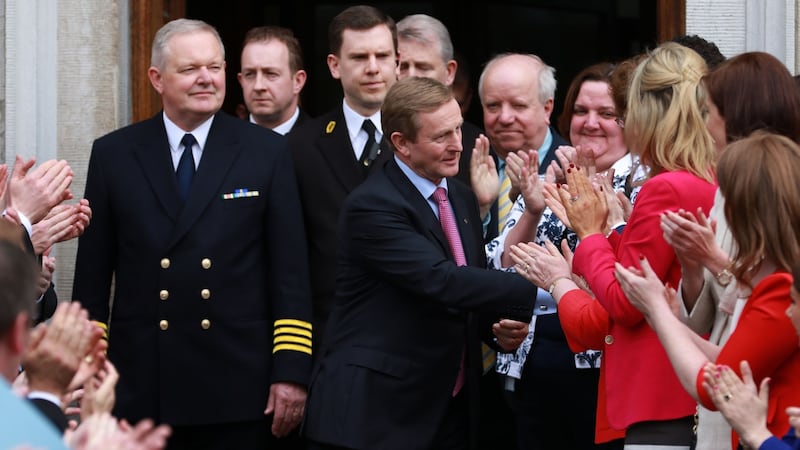The first episode of the legendary BBC comedy series Yes Minister includes a hilarious scene in which on the day after his re-election to Westminster, the hapless Jim Hacker struggles to keep the phone line at home clear in case the prime minister calls to offer him a ministerial post.
Last week one of our own new Ministers found himself in a similar predicament. So busy was the flow of calls from journalists and well-wishers to the mobile of Independent Alliance TD Shane Ross inquiring whether he had got word of a ministerial appointment that he missed two calls from the Taoiseach’s office.
Enda Kenny ultimately got through to Ross and told him he was being made Minister for Transport, Tourism and Sport. So excited was Ross by this news that he told several media representatives about it on his way to Government Buildings. In so doing he breached long-established protocol whereby the announcement of the names of those who are to be nominated for appointment as Ministers is reserved for the Taoiseach himself and is made in the Dáil chamber.

Shambolic
Ross’s protocol error is not of itself a big deal. It was symptomatic, however, of the shambolic manner in which the new Government was put together last week.
It says something also about how Ross, although he has spent several decades in the Oireachtas, is shockingly uninformed about the workings and mores of government itself.
A little while later on Friday evening another traditional protocol was also dispensed with. This time it was done by the Taoiseach and his staff themselves. Their likely reasoning in so doing says something about their continuing approach to government.
Usually when a new cabinet is being announced the ministers parade together into Dáil Éireann before the announcement is made. Traditionally they enter in order of seniority determined by a particular formula. The taoiseach, tánaiste, and minister for finance are placed first; experienced ministers come next in an order based on how long they have previously been ministers; and then first-time ministers enter in an order based of how long they have served as a TD or member of the Oireachtas.
In more recent times this parade of the new cabinet is photographed in the corridors of Government Buildings before it sets off on the short but significant journey across the interconnecting corridors to Leinster House.
This photograph is then made available to the media shortly after the formal announcement, and often becomes the centrepiece of press coverage the next day, in part because it is a less formal shot than that of the first cabinet meeting in Áras an Uachtaráin and because it is available earlier.
On Friday the Taoiseach, Tánaiste and Minister for Finance took their place at the head of this parade of Ministers but then it was decided not to follow seniority and instead to have Heather Humphreys and new Ministers Mary Mitchell O’Connor and Katherine Zappone and the new Chief Whip Regina Doherty placed in the line-up before Noonan.
Again the breach of protocol of itself is not important, but it is significant in terms of what it reveals. It suggests an early preoccupation again in this new Fine Gael-led government with media management.
The only reason for the new ordering of the ministerial parade was to obviously create a visual impression that the new Cabinet was fresh, more colourful and more female.
It was an all too obvious attempt to camouflage the failure to keep a promise made by Kenny before the election that his Cabinet would be 50 per cent female.
One wonders why the Government’s media handlers felt the need to engage in this “put the wimmin” up front manoeuvre.
In a historical context the gender balance in this new Cabinet is impressive, with five female Ministers, a new female Chief Whip and the retention of a female Attorney General.
The difficulty for Fine Gael handlers, however, is that it falls short of the grandiose pre-election promise made by Kenny.
Framework document
Much has been said and written about what this Government will do. There are thousands of words in the bilateral framework document agreed between Fianna Fáil and Fine Gael and thousands more in the lengthy programme for government agreed with Independents which was published this week.
In numerous interviews Fine Gael Ministers have talked about lessons learned and about a commitment to what is vaguely termed “new politics”.
We must ultimately, however, judge this Government by its behaviour and not its talk. It can only be truly assessed by its actions, big and small.
There are some small indicators from its initial steps that this Fine Gael government in its newly reconfigured form may be as obsessed about spin as its predecessor.








